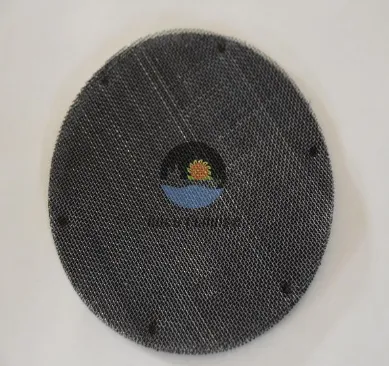aug . 20, 2025 10:06 Tilbage til listen
Effective Air Purification with Charcoal and Carbon Air Filters
Air quality is a critical concern both in residential and industrial settings, where pollutants and odors can impact health and operational efficiency. Charcoal air filters og carbon air filters offer powerful solutions for removing contaminants, odors, and harmful gases from the air. Widely used in air filters for home applications as well as industrial air purifiers, these filtration technologies combine adsorption capabilities with durability to deliver cleaner, fresher air. Their effectiveness in trapping volatile organic compounds (VOCs) and airborne particles makes them indispensable for environments ranging from living rooms to manufacturing floors.

The Science Behind Charcoal and Carbon Air Filters
Charcoal air filters og carbon air filters work primarily through the process of adsorption, where pollutants adhere to the porous surface of activated carbon. This porous material has a vast surface area, enabling it to trap a wide variety of gases, odors, and chemical vapors that traditional particulate filters cannot remove. This makes them especially effective at neutralizing smoke, cooking odors, industrial fumes, and volatile organic compounds common in urban and industrial environments.
These filters are often combined with particulate filters in air purifiers to provide a comprehensive cleaning effect. While particulate filters capture dust and allergens, carbon filters focus on gaseous contaminants and odors. This dual-action ensures a thorough purification process suitable for both home comfort and industrial air quality management.
Applications of Carbon-Based Air Filters in Home and Industry
In residential settings, air filters for home use charcoal or carbon layers to improve indoor air quality, especially in kitchens, basements, and areas prone to smoke or pet odors. They are integrated into standalone air purifiers, HVAC systems, and kitchen exhausts to maintain a healthy living environment. The ease of replacement and maintenance, along with their odor-absorbing capacity, makes them popular choices among homeowners concerned about allergens and indoor pollution.
Industrially, carbon air filters are essential components in air purifiers designed for manufacturing plants, chemical processing facilities, and waste treatment plants. These filters help control emissions of harmful gases, protecting workers and complying with environmental regulations. Their use extends to laboratories and pharmaceutical manufacturing, where air purity is vital for sensitive processes.
Durability and Maintenance of Charcoal and Carbon Filters
Charcoal and carbon filters are designed for longevity but require periodic replacement or reactivation to maintain effectiveness. Over time, the adsorption sites become saturated with pollutants, reducing the filter’s capacity to trap additional contaminants. In home applications, manufacturers recommend replacing these filters every 3 to 6 months depending on usage and air quality.
Industrial filters often come in modular designs that facilitate easy replacement and maintenance schedules tailored to operational demands. Proper maintenance ensures consistent performance, prevents secondary contamination, and extends the life of associated air purification equipment. Furthermore, combining these filters with pre-filters helps prolong their life by capturing larger particles before they reach the activated carbon layer.
Choosing the Right Air Filter Solution for Your Needs
Selecting the appropriate charcoal air filter or carbon air filter depends on the specific requirements of the environment. For homes, factors like room size, source of odors, and allergy concerns influence the choice of filter capacity and design. For industrial applications, considerations include pollutant type, concentration levels, airflow rates, and regulatory compliance.
Many modern air purifiers integrate smart sensors and automated filter replacement indicators, simplifying maintenance for users. Additionally, custom solutions are available for industries with specialized needs, such as chemical plants requiring high-capacity adsorption or food processing facilities emphasizing hygiene and odor control. Partnering with reputable manufacturers ensures access to filters that meet both performance and safety standards.
Air Filter FAQs
What is the difference between charcoal and carbon air filters?
Charcoal air filters og carbon air filters often refer to the same technology—both use activated carbon derived from charcoal or other carbon sources. The main difference lies in the specific material and activation process used, but functionally they serve to adsorb gases and odors from the air.
How do charcoal air filters work in home air purifiers?
In home air purifiers, charcoal air filters adsorb odors, smoke, and volatile organic compounds by trapping them on the porous surface of activated carbon. They complement particulate filters by removing gaseous contaminants, improving overall indoor air quality.
How often should carbon air filters be replaced?
Replacement frequency depends on air quality and usage but typically ranges from every 3 to 6 months for home use. Industrial filters may require more frequent replacement based on pollutant concentration and operational hours to maintain effectiveness.
Can charcoal air filters remove allergens as well as odors?
While charcoal air filters excel at removing odors and gases, they are not designed to capture allergens such as dust or pollen. These particles are better filtered by HEPA or particulate filters, which are often combined with carbon filters in air purifiers.
Are carbon air filters suitable for industrial pollution control?
Yes, carbon air filters are widely used in industrial pollution control to adsorb harmful gases and chemical vapors. Their effectiveness in reducing emissions helps facilities comply with environmental regulations and protect worker health.
del
-
Transforming Spaces with Christmas Tree Decorative Mesh and Architectural Mesh
NyhederAug.20,2025
-
The Modern Appeal of Stainless and Steel Wire Cloth
NyhederAug.20,2025
-
Reliable Solutions with SS 304 Mesh for Industrial
NyhederAug.20,2025
-
Premium Mesh Solutions Engineered for Industrial Precision
NyhederAug.20,2025
-
Precision Filtration with Wire Mesh Filter Elements
NyhederAug.20,2025
-
Innovative Designs with Decorative Metal Mesh
NyhederAug.20,2025

